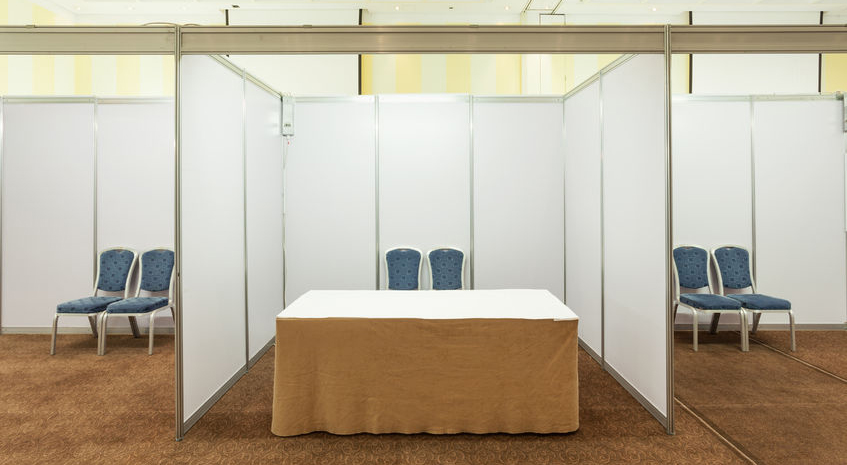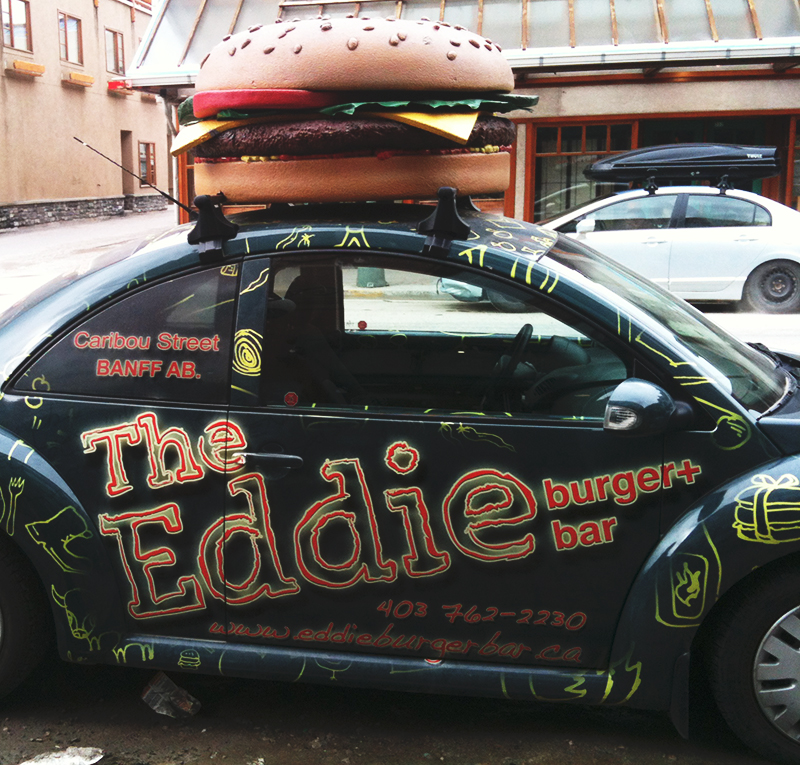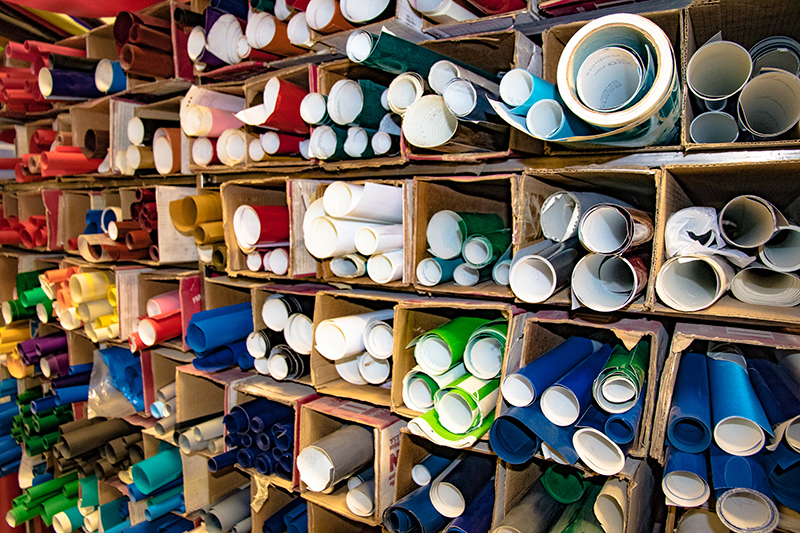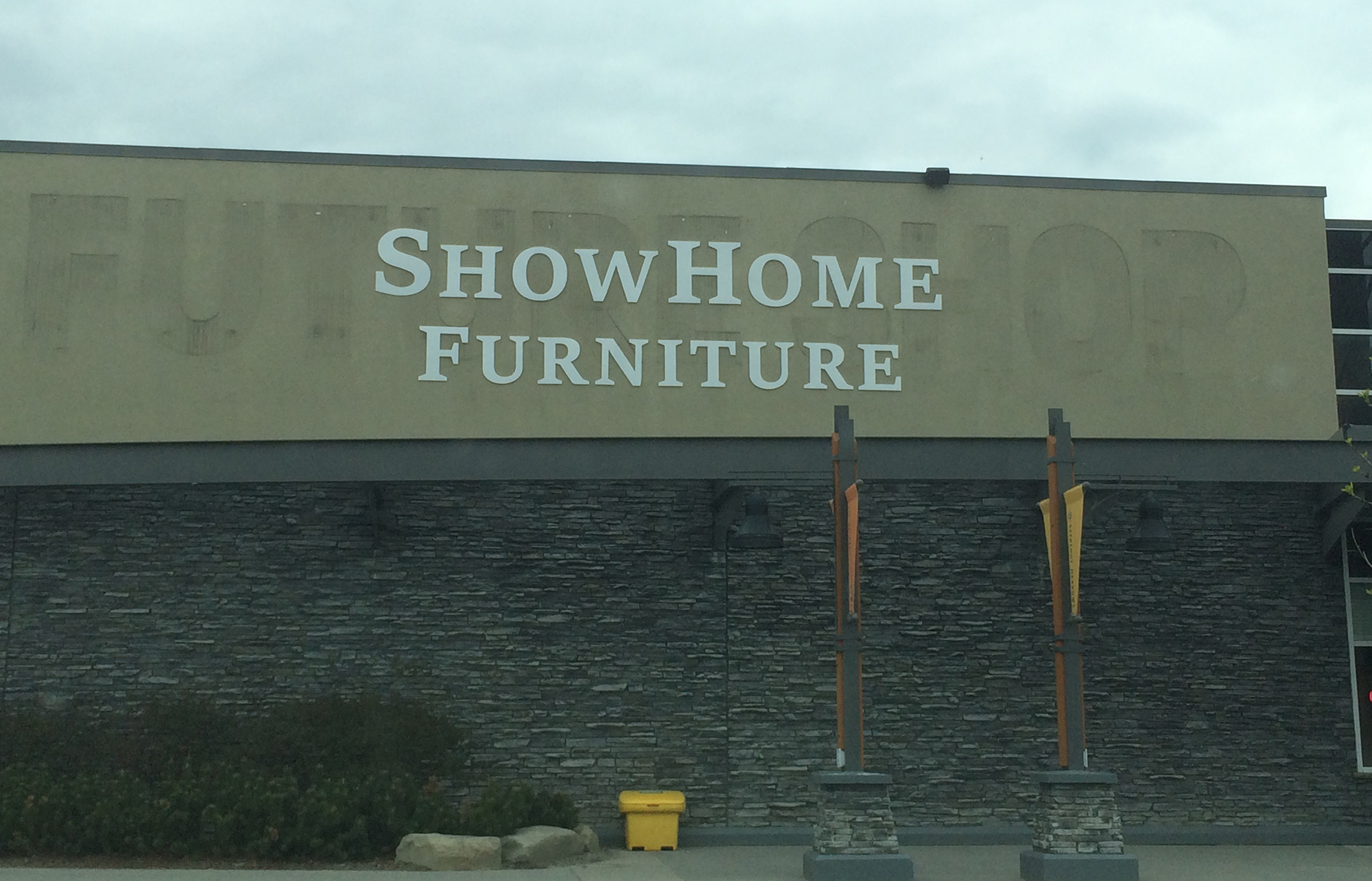
Added on 30 June 2016
By TopMade
2 Comments
Trade shows are a perfect time to meet potential clients face-to-face, generate interest in your product or service, and see what the competition is up to. However, whether you’re attending or presenting, a trade show floor can also be an intimidating space. For instance, if you’re a business owner, chances are your storefront isn’t surrounded on all sides by your direct competitors. At a trade show, you’re often not so lucky. So, if you’re a home renovation company attending a Home & Garden Expo, how can your signage or displays stand out from the visual noise and attract attention to your booth?
- Read the fine print. Every trade show or convention is slightly different. They may vary by the resources available to use, the times allotted for set-up and the booth size options. So before preparing your trade show display, read all the information provided carefully – especially measurements. Just like Goldilocks, you want the size of your displays to be just right. If your sign is too big, for example, you won’t be able to hang it properly. And if it’s too small, no one will notice it.
For an example of how much time and effort goes into booth displays, check out this video timelapse of the International Health, Racquet & Sportsclub Association 2015 tradeshow.
- Think modularly. If you go to many trade shows you might want to plan your display a little more strategically. By treating your visual elements as modular pieces that can work together in multiple ways, you can successfully size up and size down your displays to fit small and large spaces effectively.
- Build the hype. First off, let people know you’re going. You can put an announcement online and advertise in-store with eye-catching signs and flyers. Add a map of the trade show floor highlighting your location so customers and clients know where to find you. To create some extra publicity during the actual event, you can hand out branded freebies or hold a contest. Fear not, the prizes don’t have to be as extravagant as a vacation getaway. People just love free stuff. At Topmade, for example, we have created custom gifts like vinyl decals or engraved plaques.
- Cover all your bases. We’ve touched on basic rules of graphic design before in previous articles. What’s unique about trade shows is that you need:
- Large signs to attract attention from far away. You want to dazzle these folks with interesting imagery and very basic information. This includes your brand name, a tag line that clearly explains what you do, and a method for contacting you. These signs should be hung higher, so they are visible over the crowd.
- Medium-sized signs for people walking by. Roll-up banners are perfect for this role as they are at eye-level. In addition, the vertical format allows for information to be presented in an easily digestible list format. You can go into more detail about what your business or product can do on these signs, but you should still keep it to short sentences. These signs act to facilitate the moment where your knowledgeable staff can step in to answer any questions.
- Smaller signs for visitors at your booth as well as take-home material that is neatly displayed. By entering your booth, a trade show attendee has demonstrated that they want to know more. Therefore, you can give a lot more information on these signs without fear of scaring them off.
- Read the room. If you are at a conference that caters to industry experts, then focusing on the neat technical features of your product might be helpful. But if your trade show is B2C, or even B2B if there are many different types of businesses represented, you should avoid technical jargon. Instead, illustrate how your product or service will improve the lives of your potential customers. Customer testimonials are also helpful to display on your signage. They establish trust and create a personal narrative around your product or service.
- Be Social. Of course your booth staff should be friendly, but it’s important for your signs to be social as well. By this we mean you should prominently display your social media profiles at your booth via your displays. Unlike traditional methods of contact, like a website, email and phone number, social media is about instant, and public, engagement. And if you have a memorable booth, or an exciting new technology, chances are convention-goers will tweet about it. If they can successfully tag you, that’s great – and free – advertising!
- Keep it on-brand. Show off your personality with strong brand cohesion. The graphics and colors used throughout your booth should reflect your company. This includes more than just your signs – how about custom table cloths or colorful chairs? A high level of personalization really sets a booth apart from the others. It also projects an image of professionalism and attention to detail.
- Think outside the box. Don’t feel like you have to have the traditional booth setup. Why not remove the imposing table and let attendees enter the space? This opens up the possibility for large digitally-printed graphics to be displayed along the walls of your booth. You could even use smaller signs and displays to break up the space and guide users through an engrossing narrative.
If you’re worried your booth display is getting lost in the crowd, there are a lot of easy ways to hone your message, and boost your visuals, to create more impactful signage. If you’re looking for a helpful guide during your sign design process, give us here at Topmade a call. Beyond just manufacturing your sign, we offer expert signage consulting to help you decide what kind of sign is right for you.

Added on 23 June 2016
By TopMade
0 Comments
(One of Topmade’s team was out in Banff, and shot a picture of this terrific vehicle graphic display. Wish we could say we designed and produced it, but thought we’d include it here anyway for inspiration. Way to go, Eddie Burger!)
When you run a business, it’s difficult to turn your “entrepreneur brain” off when you’re not at the office. You’re constantly searching for ideas to improve your services and grow your customer reach. That’s why daily inconveniences, like being stuck in traffic, can be so frustrating. It feels like you’re wasting time that could be spent productively. The good news is there’s a way to take advantage of your commute time to achieve business goals – with vinyl vehicle wraps.
Vehicle wraps are vinyl signs and graphics that are applied to your vehicle to advertise your company. This includes cars, trucks, vans, trailers and even buses. While vehicle wraps are commonly associated with service companies, like plumbing, they can be advantageous for any kind of large or small business.
There are two types of vehicle wraps: partial and full. A partial vehicle wrap might include a simple decal, like your business logo, on two sides of your van. This is ideal if your personal vehicle is also used as a company car and you want a more low-key look. In comparison, a full wrap can create complex and eye-catching designs that incorporate your brand colours or imagery. Perforated vinyl, on side and back windows, allows drivers to see out, while the design remains visually intact to outside viewers. Along with typical matte vinyl, you can also integrate metallic and other special effect vinyl into your layout.
Remember, because it’s mobile marketing and your sign will be at a distance from the viewer, you’ll want to restrict the amount of text and use a large enough font size. Your logo and slogan should indicate what your business is about, and there should be a method to contact you, like a phone number or website address. However, there are exceptions – if your business is a food truck or mobile retail, you may want to display more information.
8 Benefits of Vehicle Wraps
- They’re on the move. A permanent sign is important for identifying your business and catching the interest of passersby. But wouldn’t it be nice if you could put signs up wherever you wanted, to reach a wider audience? Luckily, you don’t need to! Vehicle wraps go where you go. That means when you’re out and about in your local service area, or zipping through the city, your contact info is visible to potential customers.
- They’re keeping it professional. Even if you’re a small company, with a van or two, custom vinyl graphics can provide a generous boost to your public image. Much like a sharp uniform, vehicle wraps on your fleet show the world that you’re an established business with a cohesive team.
- They’re personal identification. In modern marketing, a key tenet is “be human.” If your business is located in an industrial park, you can feel isolated from your audience. In this case, vehicle wraps are a simple way for people to see your company actively working within the community. What’s more, if someone spots your professionally branded service vehicle at a neighbour’s house, they’re likely to ask about you and request your services. It’s easier to trust a friend’s opinion than to take a gamble with online reviews.
- They’re running 24/7. When you’re traveling around town or parked for long periods of time, your vinyl vehicle wraps are still serving their advertising purpose. Unlike other forms of advertising, there’s no daily budget to max out or a limiting schedule.
- They’re 360°. With a full vehicle wrap design, you can advertise your business information on all sides and all across town.
- They’re not pushy. Online display ads, for example, can pop up when a potential customer is watching a video or browsing a website. This kind of interruption is likely to cause irritation, not interest. Vehicle wraps, on the other hand, do not interrupt your audience as they go about their day. In fact, a well-designed vehicle wrap can be a welcome distraction when gridlocked.
- They’re protective. A common question about vehicle wraps is, “will it damage the paint job?” The truth is, vinyl helps your vehicle resist scratches and dents. And when you want to change your design, or sell your vehicle, it can easily be removed by a professional.
- They’re creating exposure. Most importantly, by having a visible presence around town you’ll increase brand awareness. Brand awareness is more than how many likes you can get on Facebook. It means that when someone is deciding who to call about a landscaping disaster, or where to go shopping this weekend, your company will be top-of-mind.
Traditional methods of marketing, such as TV commercials and newspaper ads, are not as effective as they once were. It can also be difficult to allocate the time and resources needed to monitor and engage with social media. So why not use a daily activity, like driving, to your benefit? If you have any questions on vehicle wraps, give us here at Topmade a call. We offer expert signage consulting through every step of the process.


Added on 31 May 2016
By TopMade
0 Comments
Illegible fonts and glaring colors aren’t the only pitfalls to avoid when ordering and installing your sign. But, don’t worry. A full-service sign manufacturer will have the expert know-how to guide you through the process.
In case you’re curious though, here are some crucial steps for a successful sign installation.
- Check local signage requirements. Your local bylaws will let you know what types and sizes of signs are permitted in your area for advertising your business. Before making a hasty purchase, an expert should be consulted to make sure your sign choice meets the necessary conditions. And, if your selection isn’t doable, they’ll be able to find you an appropriate alternative.
- Consider local weather. Canadians are well-known for talking about the weather. And for good reason! The local climate impacts what sign type will give you the greatest value before requiring maintenance or cleaning. For example, if your location has a lot of sun exposure and experiences strong winds then a 3D Channel Letter sign might be a better option than a vinyl awning.

- Put thought into the location. Sometimes it’s hard to see the forest through the trees. You become so focused on designing the sign, you don’t consider how it fits in the space. Be sure to measure the area, and plan your design, so your sign doesn’t end up too big or too small. If you’re not using an illuminated sign, and you want it to be visible at night, do you have lighting options available?
Speaking of visibility, a sign located over the door may seem like an obvious choice. However, have you checked if your audience can see it from the road or sidewalk? Maybe it’s not a great angle. Or perhaps there’s significant vegetation between your building and the road. In that case, a monument or pylon sign at the parking lot entrance might be a better bet. Take some time to investigate your space and review your options.
- Think long-term. We’ve listed design-related reasons why you shouldn’t cram too much information on a sign, but there’s also a cost-related argument. Minimal information means it’s less likely to need updates in the future. And, if you need to include information that changes often, invest in a sign that allows for it. In this case, a digital sign or panel boards.

- Double-check the design. If you do a quick google search on “funny signs,” you’ll see that signs with hilarious misspellings or grammatical errors are very popular. But this is probably not the kind of publicity you want for your business. While your file is checked for errors when you send it in to the sign manufacturer, the more eyes the better. Don’t hesitate to ask a co-worker to proof-read the design throughout the process.
- Clean the area before installation. When an old sign is taken down, chances are it will leave marks. This includes outlines left by any removed 3D channel letters or holes from uninstalled hardware. Your new business shouldn’t be haunted by the ghost of its predecessor. Not only does it look unprofessional, any visual reminders of another business is stealing your brand’s thunder! When replacing signs, the old sign and its components should be fully removed. Next, the entire area should be thoroughly scrubbed, prepped and painted.
- Trust the installation to the professionals. A DIY attitude is a great quality in a business owner. However, it’s also crucial to know when to get professional help. Installing a sign is a great example because it can be dangerous when you haven’t been trained in the proper safety or technical procedures. There’s the potential for the installer or onlookers to be injured, if the area isn’t properly roped off. There’s also the chance of the sign becoming damaged if it’s not secured properly. Suddenly the cost savings aspect of installing it yourself loses its value!
- Don’t leave a mess behind. Of course – a professional installation should include a comprehensive clean-up afterwards!
As a dedicated business owner, it can be difficult to entrust an important task, like creating and installing your sign, to someone else. At Topmade, we offer expert signage consulting to help you through each step of the design process. Have questions? Give us a call.






